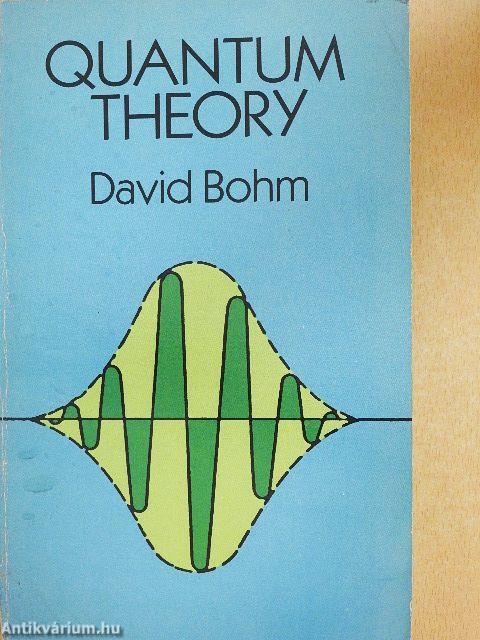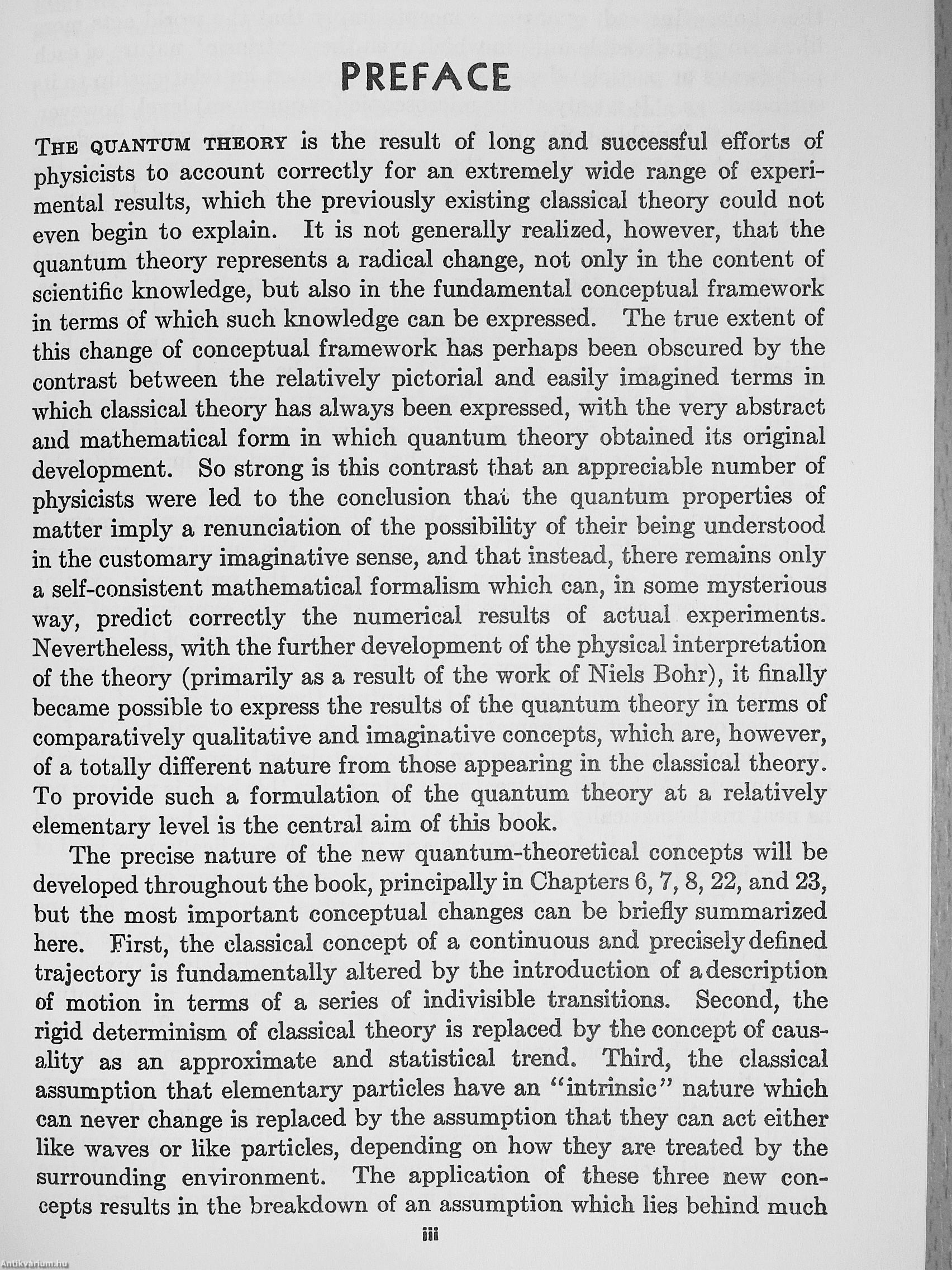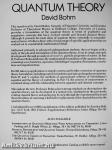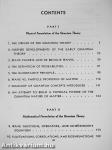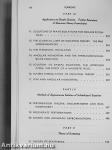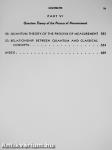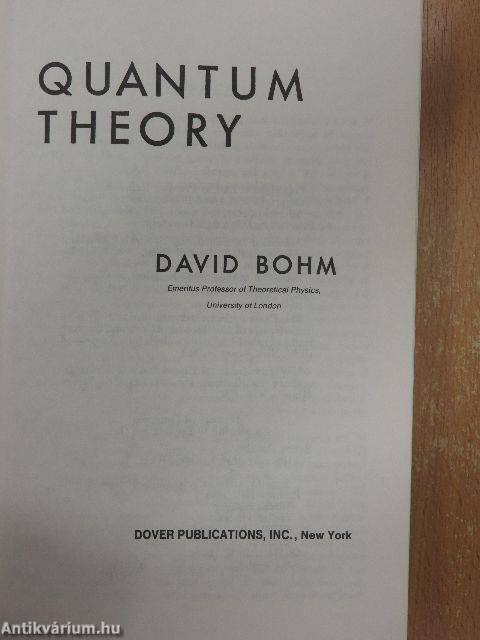1.104.125
kiadvánnyal nyújtjuk Magyarország legnagyobb antikvár könyv-kínálatát

VISSZA
A TETEJÉRE
JAVASLATOKÉszre-
vételek
Quantum Theory
| Kiadó: | Dover Publications, Inc. |
|---|---|
| Kiadás helye: | New York |
| Kiadás éve: | |
| Kötés típusa: | Ragasztott papírkötés |
| Oldalszám: | 646 oldal |
| Sorozatcím: | Dover Books on Physics and Chemistry |
| Kötetszám: | |
| Nyelv: | Angol |
| Méret: | 22 cm x 14 cm |
| ISBN: | 0-486-65969-0 |
| Megjegyzés: | Fekete-fehér ábrákkal. |
naponta értesítjük a beérkező friss
kiadványokról
naponta értesítjük a beérkező friss
kiadványokról
Előszó
TovábbFülszöveg
QUANTUM THEORY
David Böhm
This superb text by David Böhm, formerly of Princeton University and Emeritus Professor of Theoretical Physics at Birkbeck College, University of London, provides a formulation of the quantum theory in terms of qualitative and imaginative concepts that have evolved outside and beyond classical theory. Although it presents the main ideas of quantum theory essentially in nonmathe-matical terms, it follows these with a broad range of specific applications that are worked out in considerable mathematical detail.
Addressed primarily to advanced undergraduate students, the text begins with a study of the physical formulation of the quantum theor^y, from its origin and early development through an analysis of wave vs. particle properties of matter. In Part II, Professor Böhm addresses the mathematical formulation of the quantum theory, examining wave functions, operators, Schrödinger's equation, fluctuations, correlations and eigenfunctions.
Part III takes... Tovább
Fülszöveg
QUANTUM THEORY
David Böhm
This superb text by David Böhm, formerly of Princeton University and Emeritus Professor of Theoretical Physics at Birkbeck College, University of London, provides a formulation of the quantum theory in terms of qualitative and imaginative concepts that have evolved outside and beyond classical theory. Although it presents the main ideas of quantum theory essentially in nonmathe-matical terms, it follows these with a broad range of specific applications that are worked out in considerable mathematical detail.
Addressed primarily to advanced undergraduate students, the text begins with a study of the physical formulation of the quantum theor^y, from its origin and early development through an analysis of wave vs. particle properties of matter. In Part II, Professor Böhm addresses the mathematical formulation of the quantum theory, examining wave functions, operators, Schrödinger's equation, fluctuations, correlations and eigenfunctions.
Part III takes up applications to simple systems and further extensions of quantum theory formulation, including matrix formulation and spin and angular momentum. Parts IV and V explore the methods of approximate solution of Schrödinger's equation and the theory of scattering. In Part VI, the process of measurement is examined along with the relationship between quantum and classical concepts.
Throughout the text, Professor Böhm places strong emphasis on showing how the quantum theory can be developed in a natural way, starting from the previously existing classical theory and going step by step through the experimental facts and theoretical lines of reasoning which led to replacement of the classical theory by the quantum theory.
Unabridged Dover (1989) republication of the edition published by Prentice-Hall, Inc., New York, 1951. Preface. Supplementary References. Index. 655pp. 5% * 8)2. Paperbound.
ALSO AVAILABLE
Introduction to Quantum Mechanics With Applications to Chemistry, Linus
Pauling and E. Bright Wilson, Jr. 468pp. 5% x 8)^. 64871-0 Pa. $9.95 Physical Principles of the Quantum Theory, Werner Heisenberg. 184pp. 5% * 8)2. 60113-7 Pa. $4.50
The Quantum Theory of Radiation: Third Edition, W. Heitler. 430pp. 5% * 8)2. 64558-4 Pa. $9.95
Free Complete Dover Science and Mathematics Catalog available upon request. Vissza
Témakörök
- Idegennyelv > Idegennyelvű könyvek > Angol > Egyéb
- Idegennyelv > Idegennyelvű könyvek > Angol > Természettudományok > Fizika
- Idegennyelv > Idegennyelvű könyvek > Angol > Természettudományok > Matematika
- Természettudomány > Fizika > Atom- és magfizika > Kvantumelmélet
- Természettudomány > Fizika > Elméletek és törvények > Egyéb
- Természettudomány > Fizika > Idegennyelvű
- Természettudomány > Fizika > Tankönyvek > Felsőoktatási
- Természettudomány > Fizika > Társtudományok > Matematika
- Természettudomány > Matematika > Idegennyelvű
- Természettudomány > Matematika > Társtudományok > Fizika
- Tankönyvek, jegyzetek, szöveggyűjtemények > Természettudományok > Fizika
- Tankönyvek, jegyzetek, szöveggyűjtemények > Természettudományok > Fizika > Felsőoktatási
David Bohm
David Bohm műveinek az Antikvarium.hu-n kapható vagy előjegyezhető listáját itt tekintheti meg: David Bohm könyvek, művekMegvásárolható példányok
Nincs megvásárolható példány
A könyv összes megrendelhető példánya elfogyott. Ha kívánja, előjegyezheti a könyvet, és amint a könyv egy újabb példánya elérhető lesz, értesítjük.



